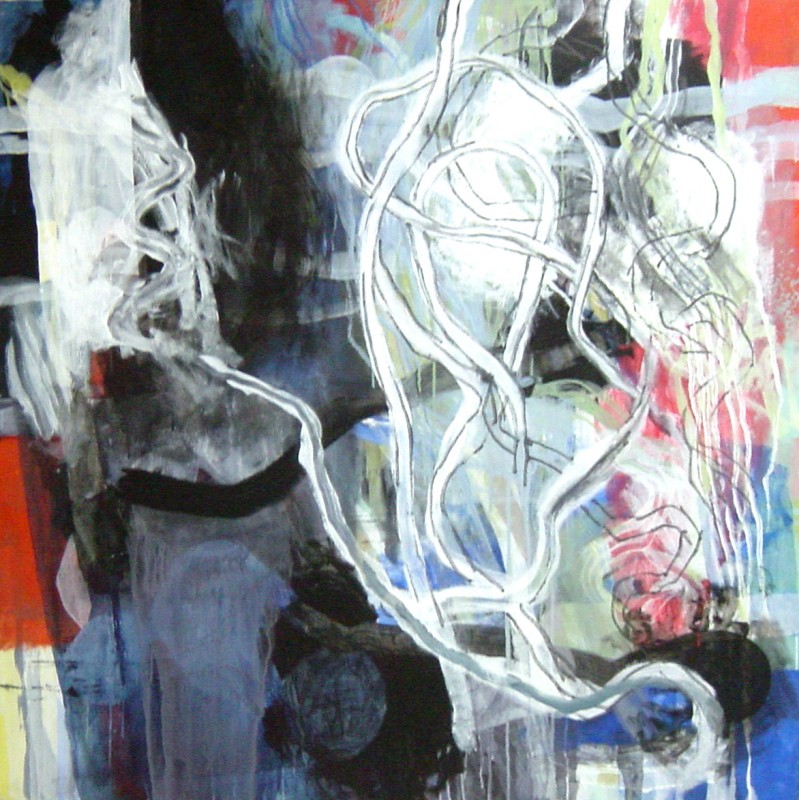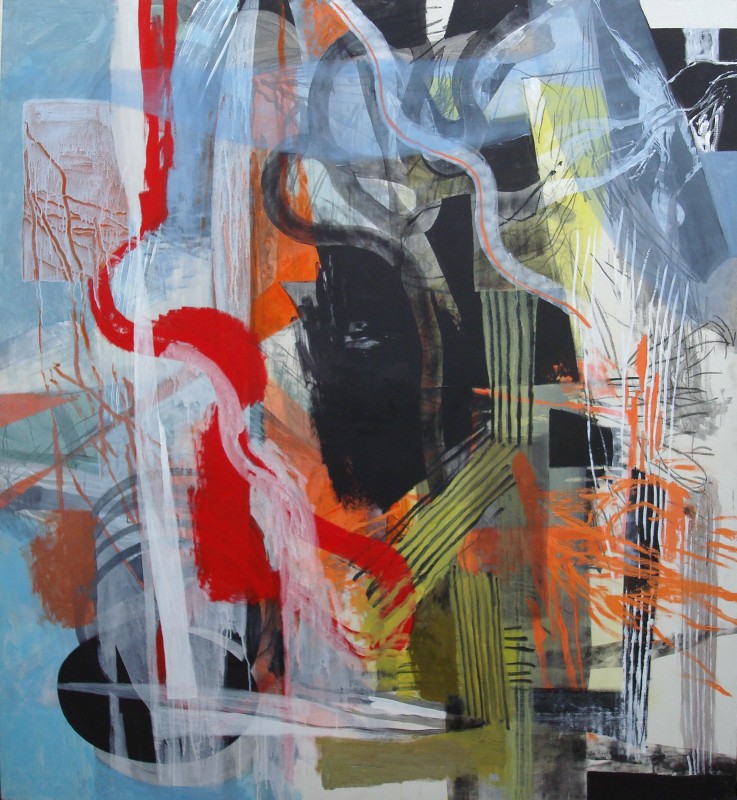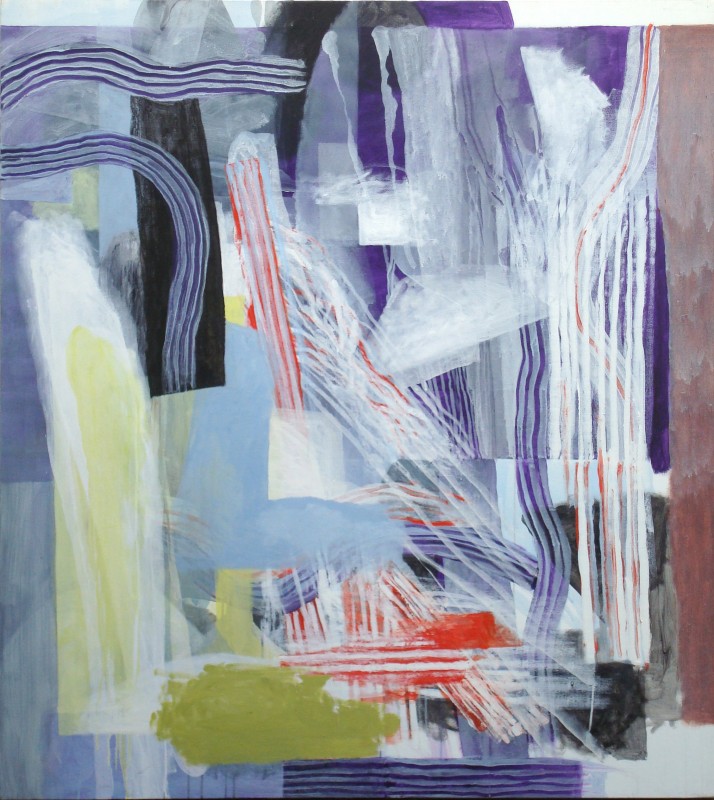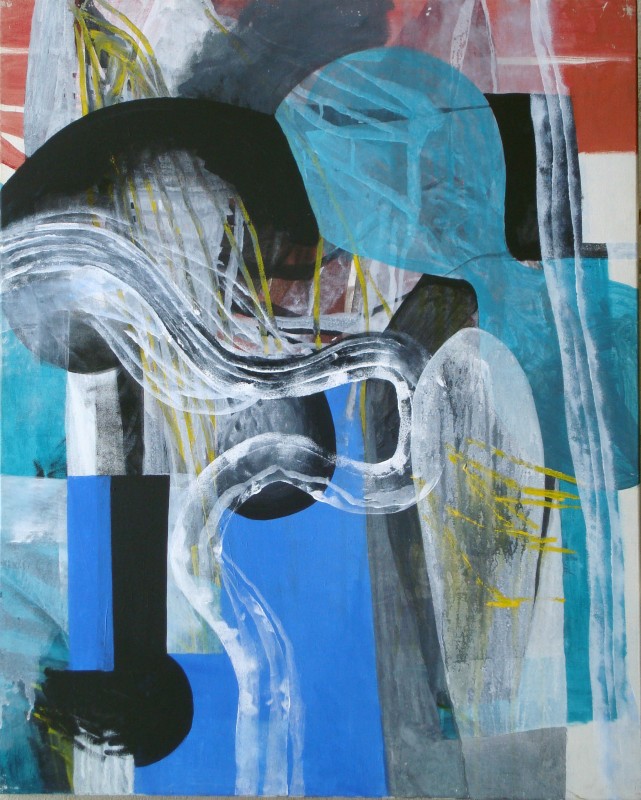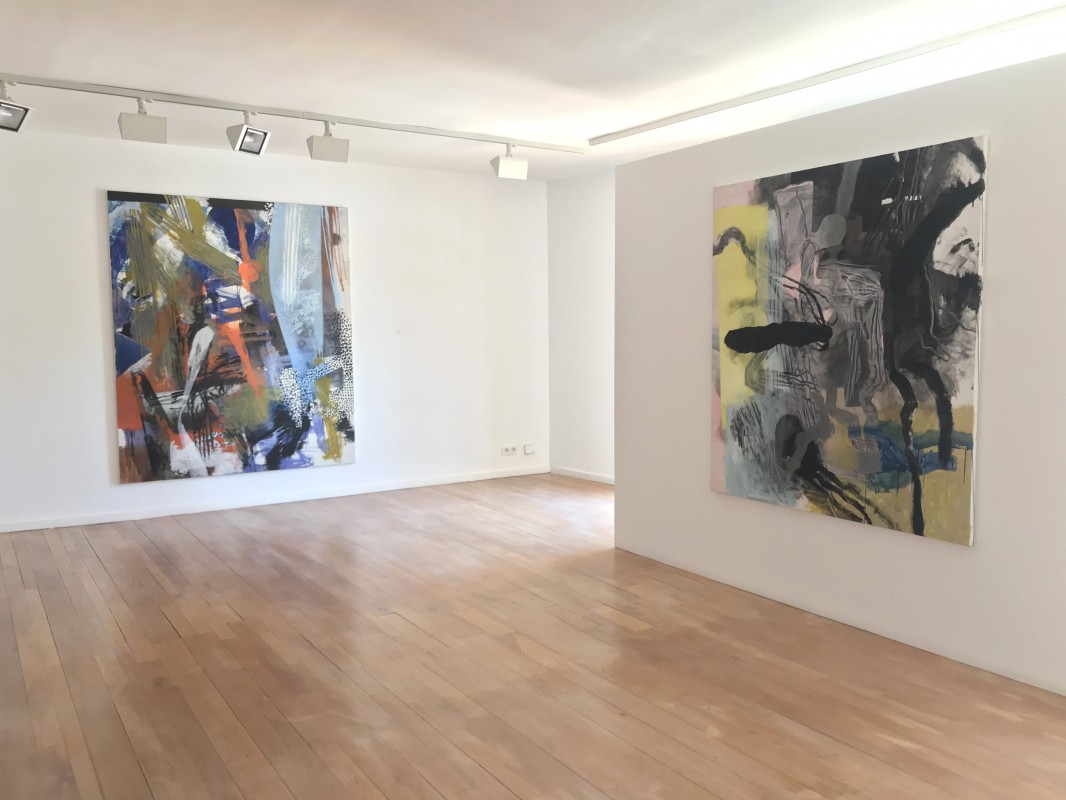Xavier Grau
‘A Propòsit de la Pintura’
We had the honour of working with Xavier Grau (Barcelona, 1951 - 2020). for many years and in the context of Edicions Maior, exhibiting his work at the gallery and at international art fairs. We have the pleasure to have the presence of the artist Charo Pradas; who accompanied him throughout his live and with whom we also have worked with.
With this showcase Galería Maior celebrates the life and work of one of the most relevant Spanish artists of his generation. With a varied selection of artworks, this exhibition brings us closer to the exuberant and electrifying artistic universe of Xavier Grau.
Xavier Grau was alongside José Manuel Broto one of the main components of the Trama Group, an artistic collective from the 70s that brought together a group of artists that advocated for a return to painting so as to counterbalance the prevailing Conceptualism of that period. With the movement Painting - Painting they defended the materiality of the medium in order to perpetuate the great European and American formalist tradition inherited from the first half of the 20th century. In such a context, this group of artists understood painting as an autonomous, relevant and necessary activity for the development of the visual arts of that period.
In general terms, the work of Xavier Grau means a continuity as well as a distancing from the preceding postulates of Abstract Expressionism, Informalism or Minimalism. The geometric and ideological rigidity that characterised the beginning of his career during the 70s progressively disappeared in favour of a more personal style which resulted in an artistic practice of great singularity and beauty characterised by gestuality and colour. From the decade of the 80s onwards we see how his approach to painting gradually became more complex and so there was an authentic eclosion of his work which stood out for its chromatic and compositional elements. It is during this period that there can be traced some resonances between Grau’s work and that of Willem de Kooning or Philip Guston, essential figures of the American Abstract Expressionism.
The work of Xavier Grau was forged throughout the years by his unbreakable defence of painting and his constant experimentation with the medium. In the density of his works there is a coexistence of the formal resources of painting and those coming from the realm of drawing, as well as a tendency for the
overlaying of planes that contributed to destabilising the pictorial surface and to gain a certain depth. All of which executed very consciously, analytically, which takes us to Grau's great technical mastery that pursued two seemingly opposed notions; harmony on the one hand and instability on the other. Movement is indeed a constant in the work of Xavier Grau —planes, brushstrokes and colours are intertwined and collide tectonically resulting in various rhythmic effects, in plural, that occur simultaneously all over the surface of the canvas and at various speeds. The intricate nature of these formulations gave place to a complex body of work full of nuances and a great deal of dynamism and compositional richness.
The profusion of colour is another constant in the work of the Catalan artist. Xavier Grau applied colour very effusively, effervescently and sometimes even fiercely —the vitality that stems from his work is intimately related to the way the artist applied colour and the
graphic motifs he made us of. On the one hand, the gestuality embedded in his brushstrokes and his tendency towards big surfaces of colour inherited from the American tradition conferred his work of a great expressive force and emotional strength. On the other hand, the inclusion of motifs such as serpentine lines, dots or geometrical figures definitely helped to moderate the all encompassing presence of colour thus generating semi-autonomous spaces that structured the compositions. It is indeed this variety of technical resources, motifs and chromaticism what imbues Xavier Grau’s work with that kind of gravitas so overtly present in all great painters.
The exhibition also includes a series of works on paper where we appreciate how the artist continued his artistic enquiry beyond the canvas. Small and medium sized pieces in which there is less of that aforementioned density and electrifying strength but instead a more intimate and delicate use of colours and those graphisms so characteristic in his work. This kind of contention does not diminish the vitality nor the complexity of such works but quite the contrary as they actually exude so much dynamism and brings to the fore the heterogeneity of his artistic vocabulary. In this sense, the paper works present a more clear dichotomy between the background, very often conformed by colour bands, and the graphisms that appear and extend in the first plane.
Confronting the work of Xavier Grau demands time and also a lot of sensibility in order to to appreciate what happens in front of our eyes, which is a lot. It is a question of being attentive to perceive those fluxes, streams in occasions, of information that sometimes appear in a harmonic way but others manifest themselves in a syncopated manner, at various speeds. Like a music score that does not understand of linearity, his work surprises us by unfolding and multiplying itself all over the surface of the canvas and so it demands us being constantly on guard in order to appreciate the aesthetic virtues of his approach. The work of Xavier Grau occupies without a doubt a preeminent place in the recent history of Spanish contemporary art, more specifically in the chapter of painterly abstraction. Xavier Grau contributed enormously not only to its development but also to its consolidation and as a result he is still an unquestionable referent for the new generation of artists.
